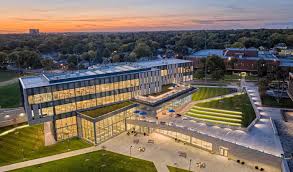Imagine a classroom where each student receives personalized attention tailored to their unique learning styles. This isn’t the future—it’s happening now thanks to Intelligent Tutoring Systems (ITS). These innovative platforms are reshaping the educational landscape, allowing learners to thrive in ways previously thought impossible. As technology evolves, generative AI services play a pivotal role in enhancing these systems, ensuring that students’ needs are met with precision and care. Explore how this blend of education and cutting-edge AI is transforming student outcomes for the better.
What are Intelligent Tutoring Systems?
Intelligent Tutoring Systems (ITS) are advanced educational tools designed to provide personalized instruction and feedback. They leverage artificial intelligence to adapt content based on individual learning needs, helping students grasp complex subjects at their own pace.
Unlike traditional teaching methods, ITS offers a one-on-one learning experience. These systems analyze student performance in real-time, identifying strengths and weaknesses. By tailoring lessons accordingly, they foster a deeper understanding of the material.
At their core, ITS combines cognitive science with technology. They simulate human tutoring by offering hints, explanations, and assessments tailored specifically for each learner. This approach enhances engagement and retention while empowering students to take control of their education journey.
With the rise of digital learning environments, Intelligent Tutoring Systems stand out as transformative solutions aimed at improving educational outcomes across various disciplines.
Different Types of Intelligent Tutoring Systems
Intelligent Tutoring Systems (ITS) come in various forms, each tailored to meet specific educational needs. One common type is the model-based ITS, which uses cognitive models to simulate human tutoring. This system understands students’ knowledge levels and adapts accordingly.
Another popular variant is the constraint-based ITS. It focuses on guiding learners toward correct problem-solving methods while identifying misconceptions along the way. This helps students grasp difficult concepts effectively.
Then there are collaborative ITS platforms that facilitate group learning. These systems encourage interaction among peers, enhancing social skills alongside academic growth.
We have hybrid systems that combine features from different types of ITS for a more comprehensive approach. By integrating multiple strategies, they cater to diverse learning styles and preferences, ensuring a richer educational experience for all users.
The Benefits of ITS for Student Learning
Intelligent Tutoring Systems (ITS) offer a tailored approach to education. They adapt to each student’s unique learning style and pace, creating personalized pathways for success.
These systems provide instant feedback, allowing students to understand their mistakes in real time. This immediate response fosters deeper learning and helps reinforce concepts more effectively than traditional methods.
Moreover, ITS can identify knowledge gaps early on. By pinpointing areas that need improvement, these systems guide learners toward targeted resources and strategies.
Engagement levels also soar with interactive features embedded in many ITS platforms. Gamified elements make learning enjoyable while maintaining focus on educational goals.
The data-driven insights from ITS not only help students but also inform educators about overall class performance, enabling them to adjust their teaching strategies accordingly.
How Generative AI is Revolutionizing ITS
Generative AI is transforming Intelligent Tutoring Systems (ITS) by creating personalized learning experiences. This technology analyzes individual student data to generate tailored content, ensuring that each learner receives support suited to their unique needs.
By leveraging natural language processing, generative AI can facilitate dynamic interactions between students and the tutoring system. It mimics human-like conversations, allowing for real-time feedback and clarification of concepts.
Furthermore, the adaptive nature of generative AI enables ITS to identify knowledge gaps quickly. As a result, these systems adjust their teaching strategies on-the-fly, enhancing comprehension and retention.
Innovatively designed algorithms also provide educators with insights into student performance patterns. These analytics empower teachers to refine curricula based on actual data rather than assumptions.
As this technology continues to evolve, its integration within educational frameworks promises significant advancements in engagement and achievement among learners across various subjects.
Real-World Applications of ITS
Intelligent Tutoring Systems are making waves across various educational settings. In K-12, they provide personalized learning experiences tailored to individual student needs. This adaptability helps children grasp complex subjects at their own pace.
Higher education institutions also leverage ITS for advanced coursework. These systems offer targeted feedback on assignments and quizzes, enhancing comprehension and retention of material.
Corporate training programs utilize Intelligent Tutoring Systems as well. They facilitate skill development through interactive modules that adjust based on employee performance. This ensures a more effective onboarding process.
Language learning platforms are embracing ITS too, offering real-time grammar corrections and pronunciation tips. Learners benefit from immediate guidance in an engaging manner.
Nonprofit organizations harness these technologies to reach underserved communities, creating accessible resources that promote self-paced learning regardless of location or background. The potential is vast and continues to grow with every innovation in the field.
The Future of Intelligent Tutoring Systems
The future of Intelligent Tutoring Systems (ITS) is brimming with potential. As technology advances, ITS will become even more personalized and adaptive. Students can expect tailored learning experiences that cater to their individual needs.
With the integration of generative AI services, these systems will harness vast amounts of data. They’ll analyze student performance in real time, adjusting content dynamically to enhance comprehension and retention.
Moreover, virtual reality and augmented reality could reshape how students interact with material. Imagine immersive environments where learners tackle problems collaboratively or explore complex concepts hands-on.
As educational institutions embrace innovative technologies, we may see a shift toward hybrid models combining traditional teaching methods with advanced ITS solutions. This evolution promises not just improved academic outcomes but also greater engagement and motivation among students as they navigate their learning journeys.
Conclusion
Intelligent Tutoring Systems (ITS) are paving the way for a new era in education. By integrating advanced technologies, particularly generative AI services, these systems create personalized learning environments that cater to individual student needs.
The diverse types of ITS available today allow educators to choose solutions tailored for various subjects and learning styles. With tools ranging from simple quiz-based platforms to complex interactive simulations, students can engage with material in ways that resonate most with them.
The benefits of ITS extend far beyond personalization; they encourage active participation and foster critical thinking skills. Enhanced feedback mechanisms help identify areas where students struggle, allowing timely interventions. This adaptability leads to improved outcomes and greater retention of knowledge.
Generative AI is at the forefront of this transformation, enabling systems to analyze vast amounts of data and generate customized content on demand. As a result, learners receive recommendations aligned perfectly with their progress and preferences.
Numerous institutions have successfully integrated ITS into their curricula. From elementary schools employing adaptive reading programs to universities utilizing intelligent tutoring for complex STEM subjects—real-world applications demonstrate effectiveness across all educational levels.
Looking ahead, advancements in technology suggest even more sophisticated development for Intelligent Tutoring Systems. The potential integration of virtual reality or augmented reality could further enhance immersive learning experiences while making education accessible globally.
As we observe the evolution in educational strategies fueled by generative AI services, one thing remains clear: Intelligent Tutoring Systems hold immense promise for enriching student engagement and achievement over time.














